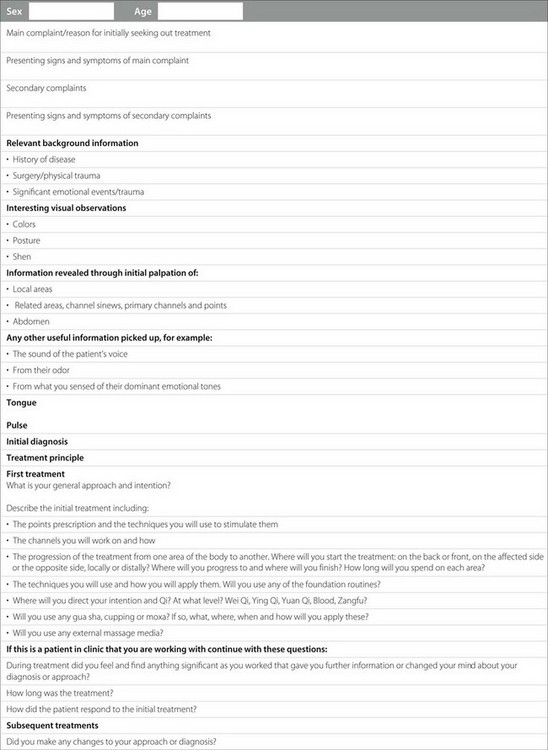CHAPTER 10 Introduction to Section Three
Creating a Tui na treatment
‘If the patient has backache, where should I start the treatment?’
‘My mother has a frozen shoulder on the right – shall I work on both shoulders?’
Planning treatment
To help you to focus your thoughts and work out your treatments, use the case format provided in this chapter (see Fig. 10.1) and work with the treatment tips and general principles of treatment.
General principles of treatment
< div class='tao-gold-member'>
Only gold members can continue reading. Log In or Register to continue
Stay updated, free articles. Join our Telegram channel

Full access? Get Clinical Tree






